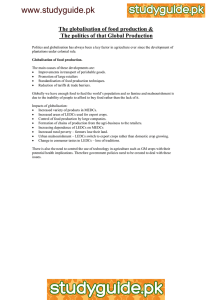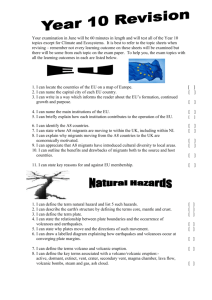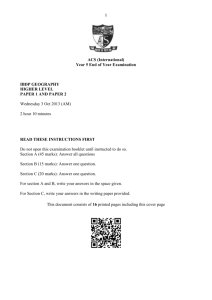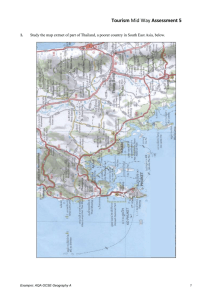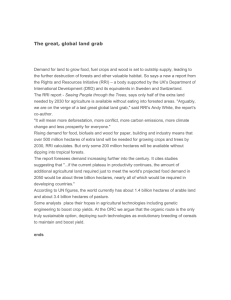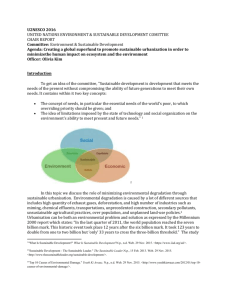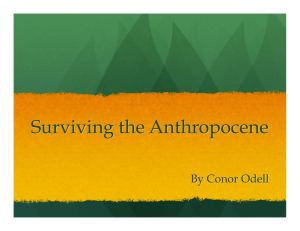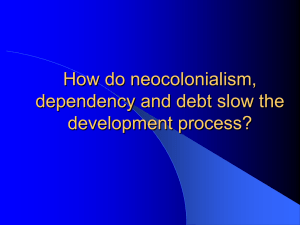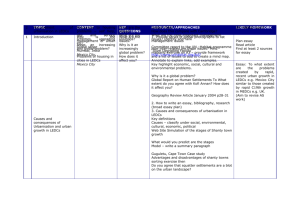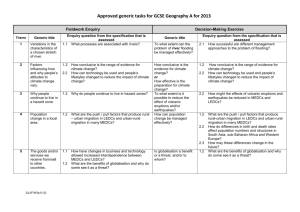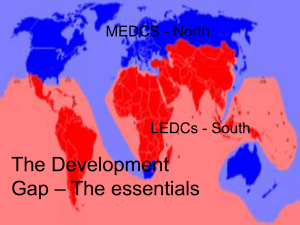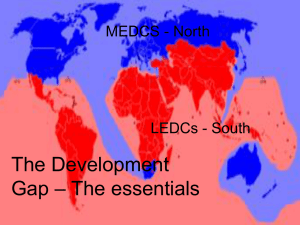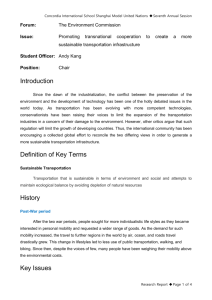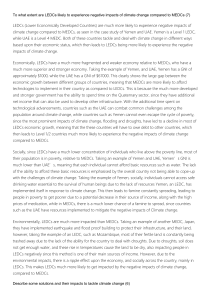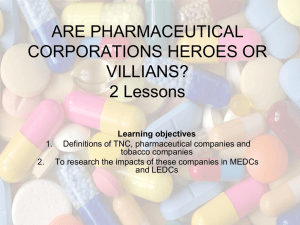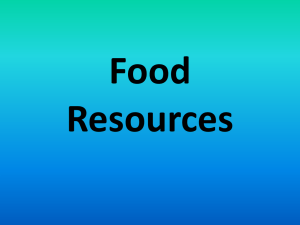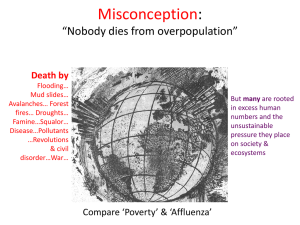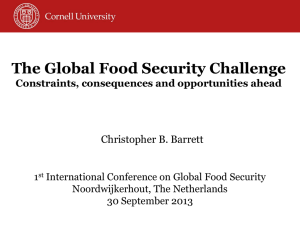Food Resources - intro1
advertisement
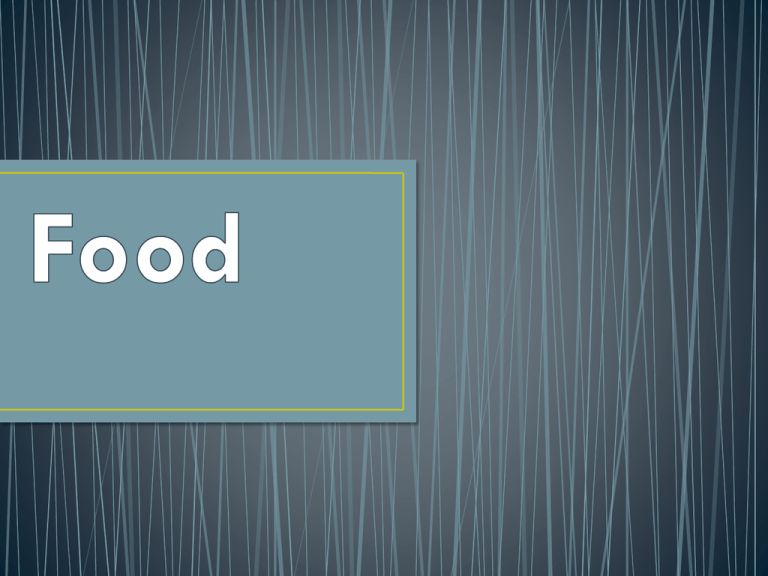
LEDCs have 80% of the world’s human population and eat 56% of the world’s meat. Grain production provides half the human population’s calories. World food production is concentrated in the northern hemisphere temperate zones. There are 23 billion livestock animals on Earth including over 3 billion cows and 1 billion pigs. In Africa, only 7% of the total land area is cultivated. There are 13.5 billion hectares of land on Earth but 90% of this is too dry, wet, hot, cold, steep or poor in nutrients for crops There are nearly 3 times as many chickens on Earth as people. Livestock need 3.5 billion hectares of land. Crops take up 1.5 billion hectares of land – about 11% of the total area. • http://www.youtube.com/watch?v=rqfZ6rsoy-E • Using data from 2006-2008 the Food and Agricultural Organisation of the UN estimates that 853 million people do not get enough energy from their food – undernourishment • Add to that the malnourished people of the world and there are 1 billion people going hungry today. • http://www.fao.org/hunger/en/ • Take a look at the graph and in approximately 100 words describe what you can see happening… vs. Cost of food? Produce too much food? Seasonality? Political / economic agenda? Choice/ need? Environmental limitations? Cash crops? Supermarkets? • Calorie intake • MEDCs - approx. 3,314 calories per capita per day • LEDCs – approx. 2,666 calories per capita per day • http://chartsbin.com/view/1150 Food Composition, in % MEDCs LEDCs Meat 12.9 7.3 Fish, Seafood 1.4 0.9 Cereals 37.3 56.1 • Feeding the world’s population in the future is going to be a challenge... • WHY? • More people • The undernourished and malnourished people need more and better food • Area available for agriculture is decreasing – reasons for this? • Erosion • Salinization • Desertifcation • Biofuels • Climate Change • Using the FAO website and other sources find out information about the three questions on your sheet… • … and add the following two questions to the list: 1. 2. Where is the Sahel and which countries are located there? Describe the current food situation in the Sahel. • The food system that humans depend on for survival follow the same paths and rules as any food chain: • First and second laws of thermodynamics: • 1st law: Energy is neither created nor destroyed • 2nd law: Energy conversions are never 100% efficient (some energy is always lost) • Therefore as we move up the food chain energy is • Do you think terrestrial or aquatic ecosystems are more efficient? • Why? Food Production System Where Type Inputs Outputs Efficiency Environmental Impact System 1 System 2

